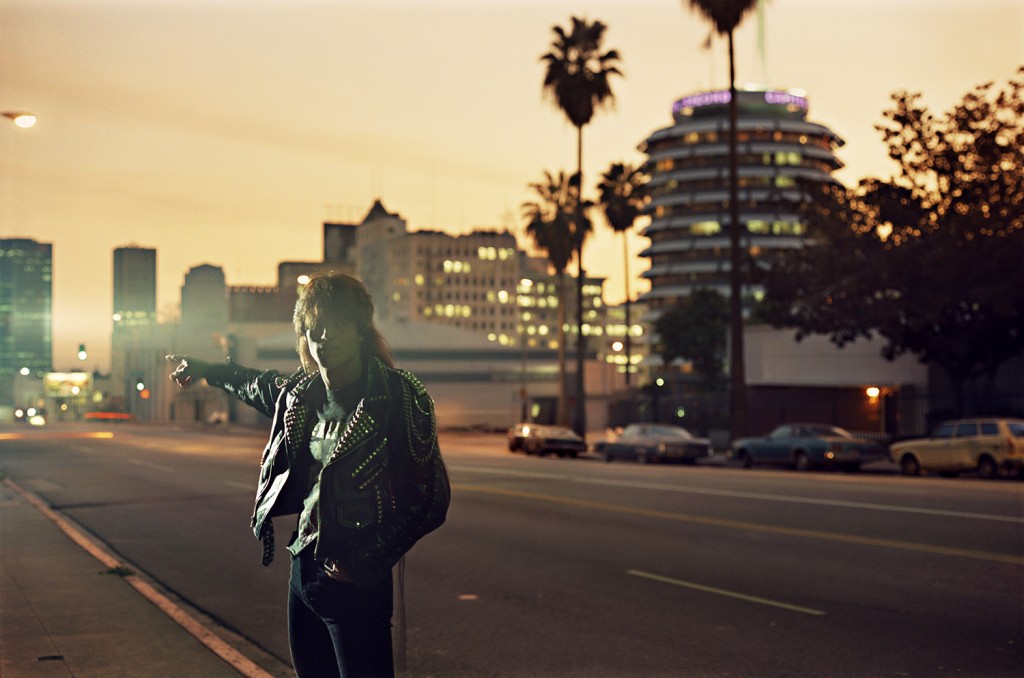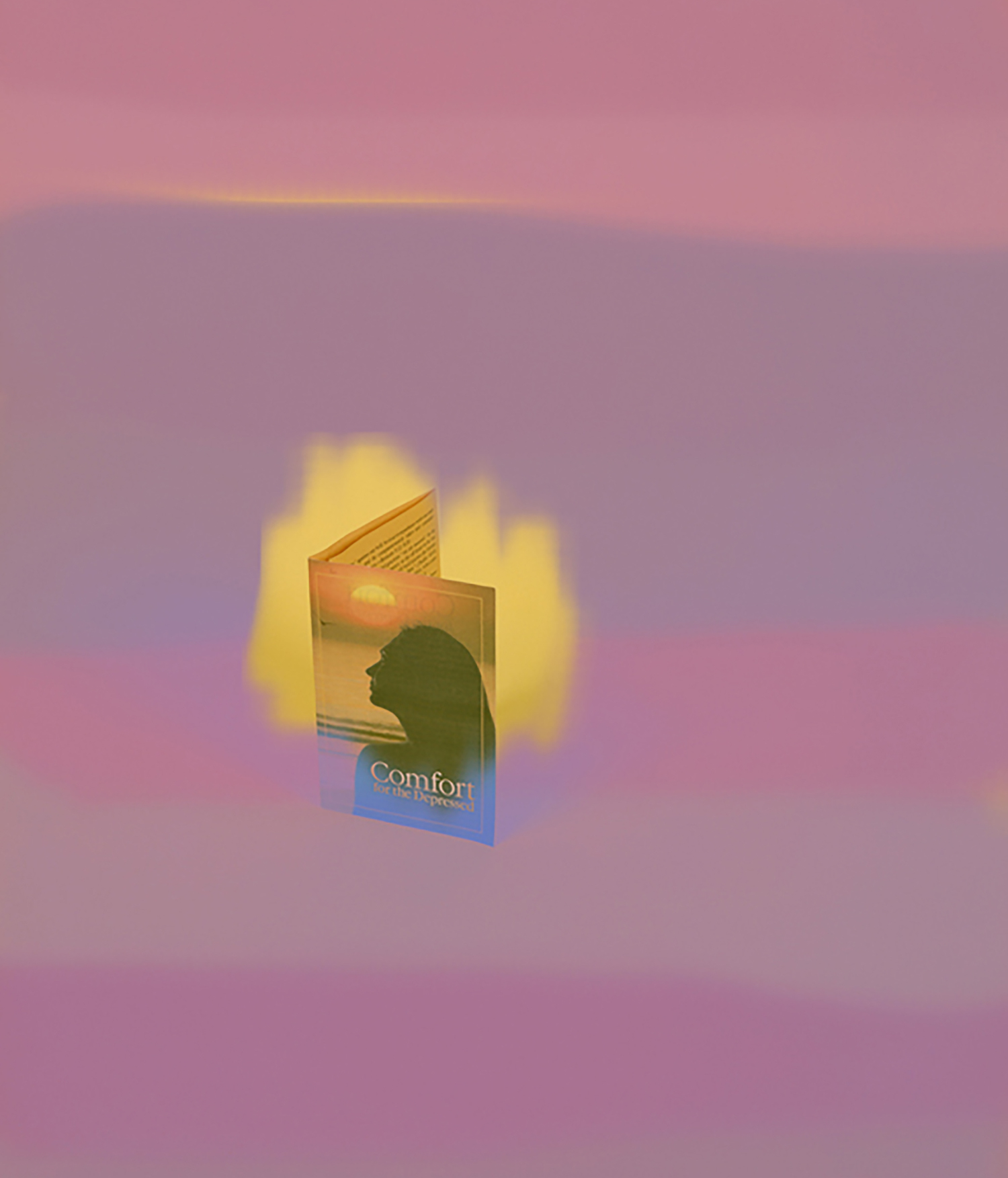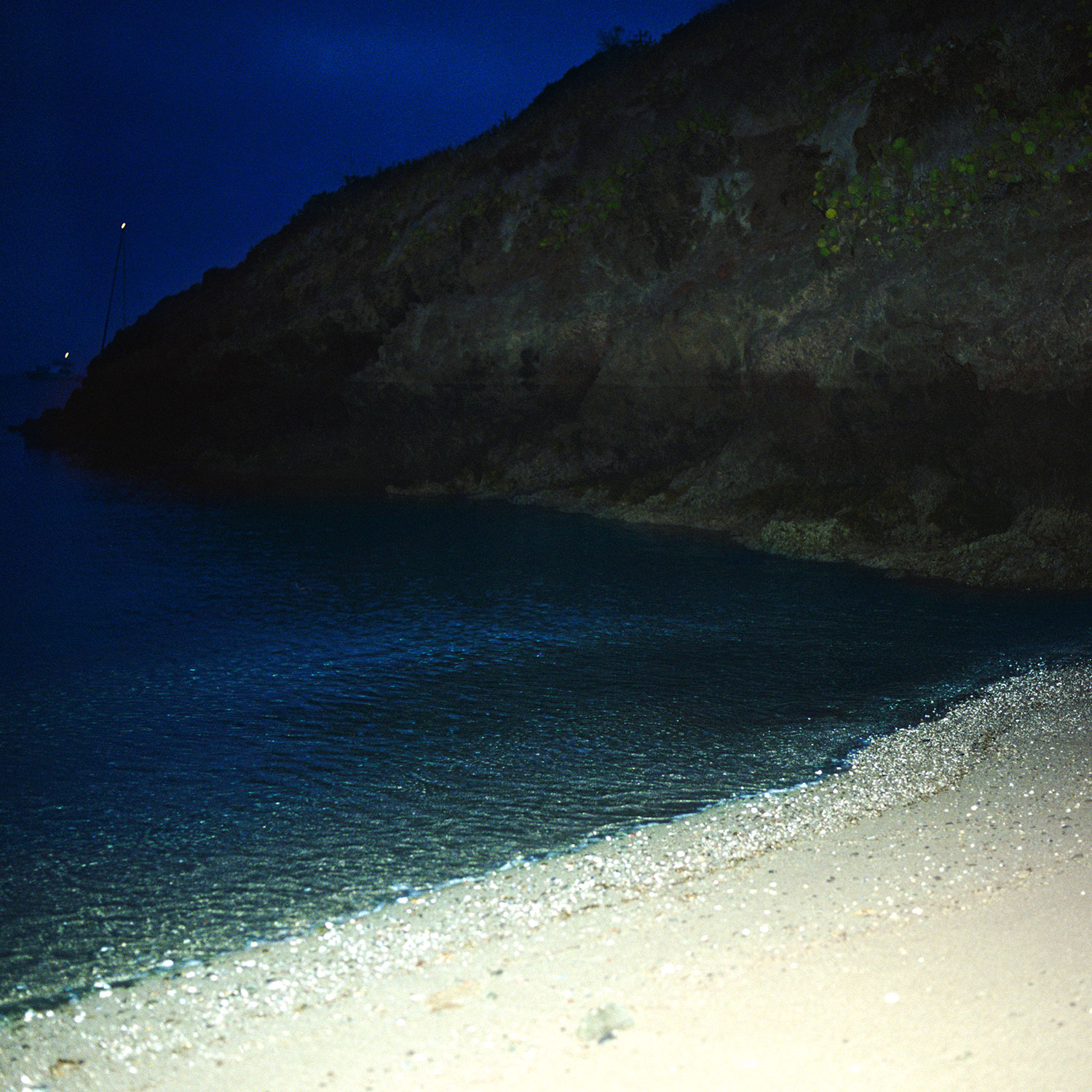
In his iconic “Hustlers” series (1993), Philip-Lorca DiCorcia photographed young men in West Hollywood waiting for their clients at dusk. In the early ’90s, AIDS was rampant, and these hustlers, with their self-reflective gaze, seem to be facing death at the front line. The cast light is a blend of natural and electric sources, which shines on their faces to reveal their mindset — half artifice, half real. Only the light of the sky is natural — does it strike its heavenly call? On the verge of death, these dreaming bodies lay on the boulevard, solitary in the light, familiar with the night. Are they zombies, saints, slaves or heroes? Are they already dead or already immortal? DiCorcia’s use of light is a metaphor for Heaven and Hell, the California Dream’s suddenly inversion into a nightmare.
In the DC Comics universe, Kandor is the capital of Krypton and Superman’s birthplace. Regrettably, the mad scientist Brainiac shrunk it to 1/1000th of its original size, using a ray of his own invention. Superman rescued the miniature city back from the supervillain and now monitors it in his Fortress of Solitude. The city’s dwellers survive under a bell jar plugged into an atmosphere tank. The “Kandors” series (2007) by Californian artist Mike Kelley consists of a number of translucent versions of this fictitious city in tinted glass bottles. The sculptures are accompanied by videos depicting the life of Kandorians; they seem to enjoy sadistic rituals. If at first we thought Kelley’s Kandor was a utopic city, it turns out to be more complicated than that. The sculptures are reminiscent of Los Angeles: a powerful city creating its own reality and culture, breathing its own air, its own dream.
“I would take issue with Los Angeles being a utopian city,” says curator Neville Wakefield. “I see LA as this idea of being a repository for a spiritual America in the same way that that Dante-esque image that Richard Prince made of Brooke Shields is Spiritual America. It’s oiled, it’s preadolescent, it’s lubed up and sexualized, and really weird. I don’t see it as utopic in any way. I see it as essentially — if anything — dystopic. I see it as a kind of desperate new world.” Did LA not keep its promises? “Don’t get me wrong,” he adds, “because I see it as largely dystopian doesn’t mean to say I don’t love it — I’m drawn to dystopia — but I think the attraction is to do with this idea of it being chimerical. It’s an architecture of ideas; that’s what draws people.” From Joseph Smith and the Mormons to the influx of refugees after World War I that formed Hollywood, the West has been a destination for people fleeing from structures of oppression and persecution, for refugees from all kinds of reality.
The idea of going West became a global mindset, more than a simple destination. With Bradbury’s Martian Chronicles (1950), one can fathom the human astronauts’ endeavor as a metaphor for the real migration toward California. In Bradbury’s book, the explorers don’t find El Dorado, and they realize their dangerous mistake. They are rewarded with indifference, incomprehension, despair and even death. Dystopia can be a harsh awakening after a long, endlessly hopeful trip. In Herman Melville’s “The Piazza” (1856), the narrator fantasizes about what seems to be a house in the distance, probably a fairy’s home. Once he gets there, after a long trip, he meets miserable and lonely Marianna, who is sighing over his house. Does happiness only lie in perspective? Is it the horizon line that makes things attractive? As Polanski says of LA: “There’s no more beautiful city in the world … provided it’s seen by night and from a distance.”
In Polanski’s Chinatown (1974), the water wars are a clear example of how dystopic LA can be. The pipes that engineer William Mulholland had constructed to get access to water were about 220 miles long. “That to me is the artificiality of California,” says Neville, “that water is essentially the occupation of aridity and the entire infrastructure is about the distribution of water.” Which leads us to another film that alludes to the relationship between LA and water: Blade Runner (1982), where it never stops raining. In a famous scene, the replicant claims he is actually human, because he can feel, and has stellar, moving memories, all while the rain is pouring over him. Is it a take on artificiality? “It’s not just an analogy,” says Neville, “that’s a baptismal dream that is rooted in every kind of cleansing myth from the beginnings of spirituality to science fiction.” In LA film noir, it often rains when something is about to happen. “I think rain has a revelatory function,” continues Neville, “Rain in LA, in that part of California, means flash flood, generally. It brings this revelatory, cleansing, flooding moment and then it’s gone.”



